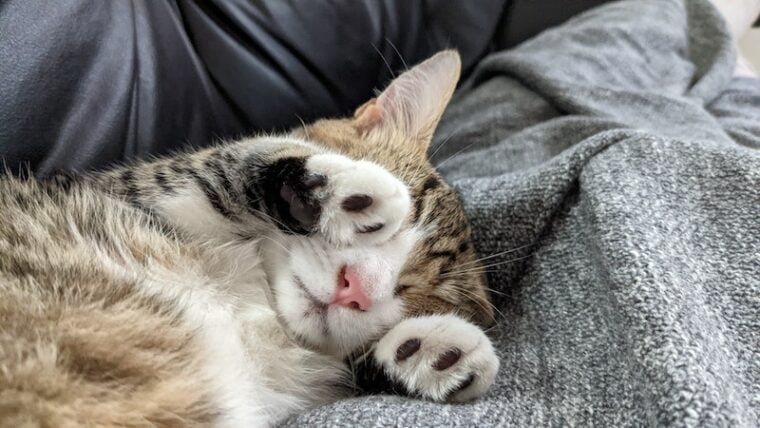
Cats are fascinating animals, and there are a ton of different things that make them unique. Almost everything about cats is cute, but the most adorable thing about cats is, arguably, their paws!
Besides looking cute, there are a bunch of things that make them essential for a kitty’s everyday life. They help cats efficiently walk, climb and hunt, but they also have other traits that make them amazing body parts.
So, what’s so unique about cat paws? Read our article below to learn 11 fascinating facts about your cat’s paws and slightly better understand cat anatomy.
The 11 Facts About Your Cat’s Paws
1. Cat’s Front Paws Contain More “Toes” Than the Back Paws
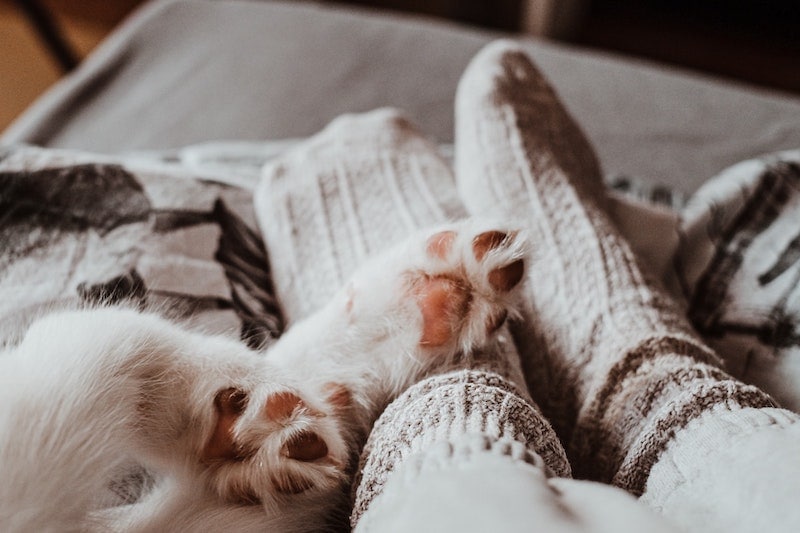
Most people believe that cat paws contain an equal number of “toes,” both front and back. However, cat anatomy is slightly different; the front kitty paws contain more toes than the back paws.
Cats have four toes on their back paws and five on their front paws. These extra “toes,” also known as declaws, are similar to our thumbs. Declaws are actually quite common among animals, including birds and reptiles, but the declaws of most animals have little functional value.
Luckily, that’s not the case with cats—they use their declaws while playing and hunting. While the extra “toes” help cats with their daily activities, they wear down much slower than other claws, so they might need extra attention to keep them in good shape.
Some cats do have hind dewclaws but it is not the norm for most breeds.
2. Cats Have Scent Glands Hidden Between Their Toes
Cats are mysterious creatures with a couple of tricks up their sleeves or, better said, paws. Underneath the fur of their paws, kitties have hidden scent glands between their toes that help them mark their territory.
Most people don’t know this, as the pheromones cats release are not something our noses can detect. However, these smells are an important part of your feline’s life as they allow cats to claim their territory. That’s one of the main reasons why cats scratch furniture and different objects around your household.
The next time your kitty starts climbing all over you, cuddling and kneading you with its paws, remember that felines do this to claim you in some ways and mark you as their person.
3. Cats Know How to Walk On Their Tippy Toes
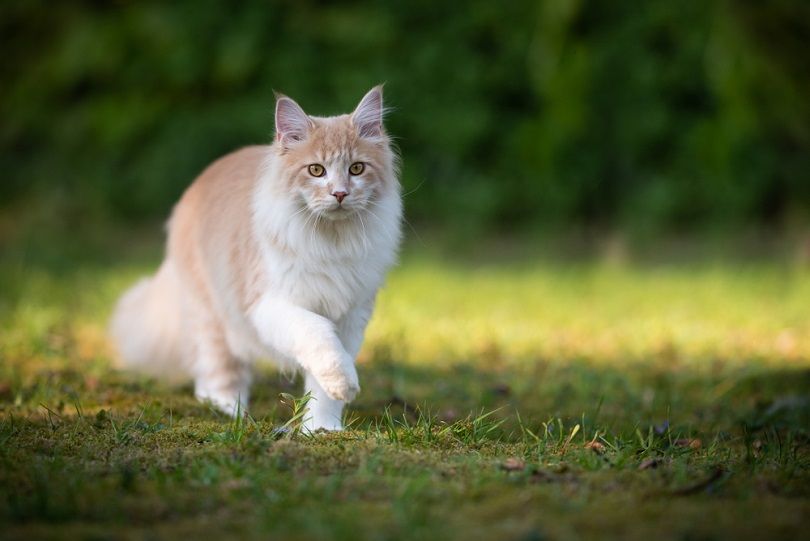
Another fascinating thing about cats and their paws is that felines are digitigrades, meaning they walk on their toes or digits. Cats share this trait with dogs, hippos, and pigs along with most other species, humans however are plantigrade and walk on the flats of our feet.
While this may sound funny, it’s an excellent way for cats to approach their prey and hunt it down quietly and quickly. Occasionally, walking on tippy toes can be an essential tool for survival, especially for cats in the wilderness.
4. Cat Paws Absorb Sounds and Shock
As you know, cats are active creatures that love to jump around, and somehow, they always land graciously, regardless of the height they’re jumping from. Cats are able to do that because their paws allow them to land silently and lessen the impact of the jump.
When the cat lands, especially after a jump from a high place, its feet absorb the shock from the fall. Because of that, cats don’t get hurt during jumping. Also, their padded paws absorb sounds, allowing them to get information about the environment around them.
These kitty paw features are an essential survival tool for cats as they help them catch their prey, escape predators, and do what cats do.
5. All Cats Besides Cheetahs Have Retractable Claws
Every cat species besides Cheetahs has retractable claws, meaning that kitties hide them in their little toe pads until they need to scratch or hunt. Because cats only let their claws out when needed, they remain protected and sharp until it’s a good time to use them.
Since the claws are hidden, they also allow cats to walk without the claws touching the ground. Most of the time, cats keep their claws hidden until it’s time to hunt, jump or run.
Having retractable claws is also beneficial for cat parents as they don’t have to worry about their kitty scratching or damaging everything in their household.
6. Cat Paws Can Sweat
Cat paws hide all kinds of secrets, and one of the biggest secrets is they contain hidden sweat glands. These sweat glands allow cats to cool down, but they’re also activated when your feline feels nervous or anxious.
In some ways, kitties can have sweaty paws, similar to our sweaty hands when anxious or stressed. You’ll be able to notice the sweating when your cat feels uncomfortable, which can happen around other cats or when going in the car.
While it may sound strange, there’s nothing to worry about, as paw sweating is completely normal for cats.
7. Most Cats Have a Dominant Paw
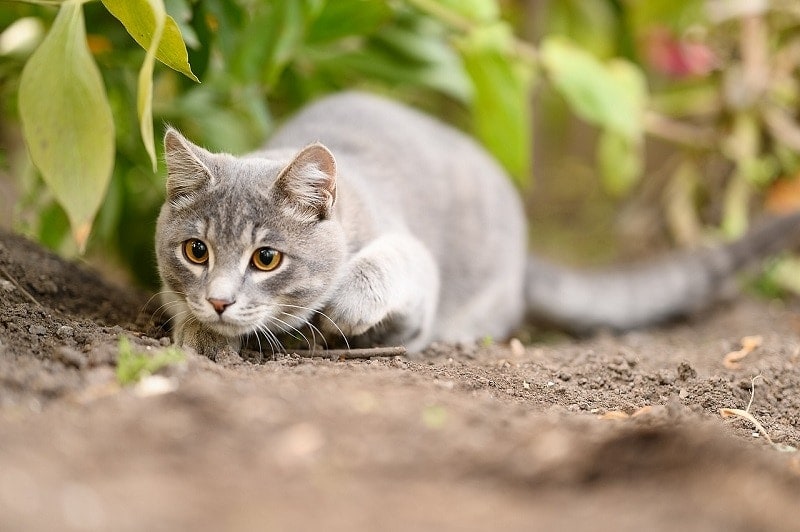
Like humans, most cats have a dominant paw, which you can notice when your cat is doing a challenging task. There’s no specific evidence as to how cats choose their dominant paw, but most of the time, male felines prefer to use their front left paw, while female kittens prefer their front right paw.
If you’re unsure about which paw is dominant for your cat, you can simply observe it while it’s performing difficult tasks such as hunting or reaching something in a hard-to-reach spot.
8. Kitty Paws Come in Various Colors
Cats’ paws come in various colors, ranging from pink and gray to black. Most of the time, the color of the paws is color-coordinated with the color of your feline’s fur. Of course, this is not a rule, but it’s the most common situation in cats.
However, cat paws can also be a mixture of different colors.
9. Some Cats Can Have Extra Toes on Their Paws

Most cats have 18 toes—four toes on each of their back paws and five toes on each of their front paws. However, some cats can have extra toes, and they are commonly known as polydactyl cats. Some people even refer to these kitties as Hemingway cats.
The extra toes can occur on both the front and back paws, and they represent a genetic mutation called polydactylism. While this physical anomaly may appear rare, it’s quite common with all cat breeds, but the breed that’s quite susceptible to this anomaly is the Maine Coon.
10. Cat Paws Are Extremely Flexible
As you know, cats are able to perform extreme tasks—climbing up trees and jumping off high places. One of the reasons why cats have these abilities is because their paws are incredibly flexible. During climbing and hunting, kitty paws will bend or turn inwards to allow the feline to perform a hard activity successfully.
While this feature is handy for climbing, it can be a disadvantage when a cat wants to get down a tree because its paws face in the opposite direction.
11. Cat’s Paws Are an Essential Tool for Grooming
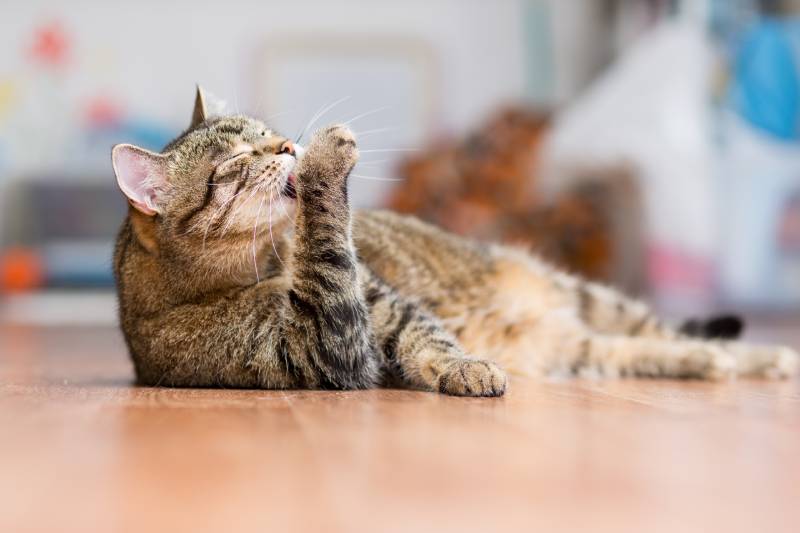
Cats love to groom and lick themselves to keep their fur tidy and clean. While they can reach most spots on their bodies with their tongue, they need their paws for hard-to-reach spots, which is why they’re an essential tool for grooming.
If a kitty can’t reach a particular spot during grooming, it will lick its paw and use it to clean and rub the spot. It’s a common behavior that starts when a cat is around 4 weeks old, allowing your kitty always to look its best.
Keeping your cat's nails trimmed can help you avoid many common paw problems. We like Hepper's Cat Nail Clipper Set because it has it all: two sizes of well-designed clippers, a nail file, and a handy carrying pouch. The clippers have built-in safety guards and locking switches, and the blades are made of sturdy, easy-to-clean stainless steel.
At Pet Keen, we've admired Hepper for many years, and decided to take a controlling ownership interest so that we could benefit from the outstanding designs of this cool cat company!
Conclusion
There are a bunch of fascinating things about your cat’s paws. They are a vital tool that allows your feline to perform its daily activities and get to know its surroundings. Paws help cats climb, jump, hunt, and even groom themselves, which is why they’re so important for felines.
See Also:
- Does a Cat Need Their Paw Fur Trimmed? Vet Approved Tips
- Why Don’t Cats Like to Have Their Paws Touched? What Science Says
Featured Image Credit: Julie G, Unsplash








